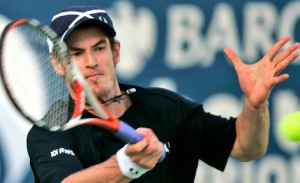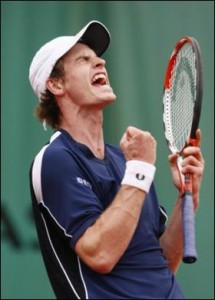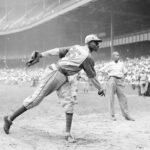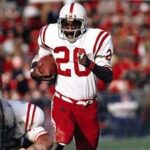Will It Be “Murray Time” At The U.S. Open

Andy Murray will be looking for his first major championship at the U.S. Open
“Never change a winning game; always change a losing one.”—Bill Tilden
Bill Tilden won seven U.S. Open Championships, six consecutively. Roger Federer will be attempting to tie this record in 2009 at Flushing Meadows in New York. His major competitor will be Andy Murray, the world’s most dour yet respected Scotsman and the new No. 2-ranked player in the world.
According to the seeding, Federer is the favorite, but you cannot rely upon seedings or speculation in sports—meaning you have to play the entire tournament (or the whole match) before the winner is known. If every outcome were predictable, why would we even bother to play?
As we speculate about the extent of the rest of Murray’s career, we conclude there are few weaknesses left to derail the success of this seemingly unstoppable force in men’s tennis.
In 2009 at the U.S. Open, barring illness or injury, Murray will win his first major, having finally broken the choke-hold on the No.1 and No. 2 rankings held by Roger Federer and Raphael Nadal for over four years—Murray will enter the Open seeded No. 2.
In April of 2007, Murray became ranked in the top 10. After splitting with Coach Brad Gilbert and hiring a team to work with him, Murray attacked his fitness regimen with a vengeance.
He rose to the world No. 4 ranking in 2008 and participated in his first grand slam final in New York during the U.S. Open, where he lost to Roger Federer in straight sets, 6-2, 7-5, 6-2.

Murray reached his first grand slam final at the 2008 U.S. Open before falling to Roger Federer.
Pete Hamill described New York as the city of right angles and tough, damaged people. It is here that Murray will shine in 2009 because he loves the hard courts, the night life and the bright lights.
In this mélange Murray emerges as the U.S. Open champion with his ability to carve up the opposition with scalpel-like competence.
He will win because of his uncanny ability to anticipate and react. As the best counter-puncher on tour today, Murray transitions from defense to offense with extraordinary speed.
He has mastered a two-handed backhand and executes it as well as or better than anyone currently ranked in the top five.
Intelligent and well-versed in tennis tactics, Murray is able to change his game plan if need be in the midst of the action just as Bill Tilden advised.
He can do that because he has confidence in himself and his own ability to figure out the opposition.
His greatest improvements have been, first of all, his ability to remain cool and calm under pressure and not give into anger, frustration and defeat.
In the past Murray’s sour attitude affected his play and interfered with his ability to win. Anger was a distraction and a distiller of aggression. He has mastered that tendency to his great credit.
Plus Murray is fit and he can endure protracted matches. His ability to remain focused has improved his chances to win.
Federer remarked after losing to Murray in their first round match in Dubai in 2008 that he was surprised that Murray had not improved as much as Federer anticipated since their last encounter.
He felt that Murray’s tendency to hold back and remain so far behind the baseline was hurting his overall game. Federer was widely criticized by the British press who called his remarks “sour grapes.”
But Federer’s analysis proved to be spot on because that is exactly what Murray has done to improve his game and what he must continue to do.
When Murray “goes away” during a match, you can find him camped out “miles” behind the baseline. He needs to keep moving forward, being aggressive to impose his game on the opposition. When he does that, Murray exerts untold pressure on the man on the other side of the net.
With his meticulous touch shots and his smooth movements on court, Andy Murray reminds the tennis aficionados of Miloslav Mecir—a.k.a “the Cat,” who drove Swedish players Stefan Edberg and Mats Wilander and Czech Ivan Lendl to distraction.
However, watching Murray execute on the court recently with some breathtaking reflex shots reminds many of current No. 1 Roger Federer. How long before the student surpasses the master?
Winning the 2009 U.S. Open is the first step for Murray on the long road to the top.
JA Allen is a regular contributor to Sports Then and Now.














